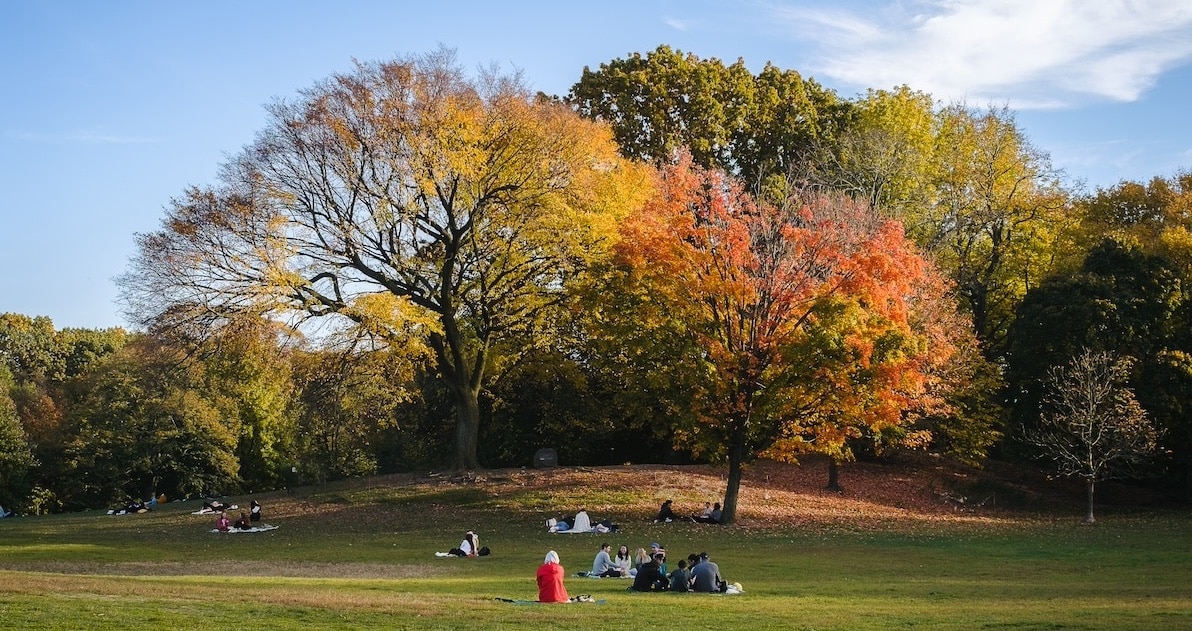Enjoy Fall Foliage in Prospect Park
November 1, 2014
For a true taste of autumn in New York, there are few places more spectacular that Prospect Park. Daily visitors will notice the transformation throughout the Park as the canopies turn from lush green to brilliant amber and gold. In preparation for the changing season, we’ve suggested some of our favorite routes through Prospect Park to check out the stunning fall foliage.
Peninsula to Lookout Hill
While it’s difficult to pinpoint when and where the leaves will begin to change, the horse chestnuts on the Peninsula are typically the first to hint at the start of the season. The woodland paths will guide you through a variety of species, providing some of the most scenic lakeside views in the Park. After winding around the Lake, cross Wellhouse Drive to Lookout Hill, the Park’s highest point, where you will find raspberry bushes with leaves turning red as well as yellow-leaf tulip trees.
Lullwater and Nethermead
Starting at Lullwater Bridge, follow the shoreline toward the Nethermead, where you’ll find some of the earliest signs of the autumnal transition. The watercourse hosts tall maples and London Plane trees that have already begun to change color and drop their leaves.
Ravine to Long Meadow
Walk through the Nethermead Arches and up the slope to the woodland Ravine. While it might be difficult to see the tops of the towering oak trees, shrubs like viburnum and serviceberry in the understory will begin to show signs that the fall has arrived.
Grand Army Plaza to Meadowport Arch
One of the most intimate places in Prospect Park is a small oval path just inside its northernmost entrance. Enter the Park at Grand Army Plaza near Prospect Park West, and head toward the Meadowport Arch. You’ll come to a gingko, Nyssa and Japanese Maple. If you catch these trees at the right time, you’ll find them cascading with color from the top down. From there, the trees begin to change along the Long Meadow like a chain reaction.

